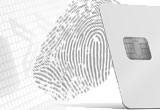How will identity technology emerge from the pandemic?
28 April, 2020
category: Biometrics, Digital ID
The coronavirus pandemic is already having a serious impact on identity technology and could bring about more changes when it comes to online, mobile and biometric forms of authentication and security.
Those potential changes have only begun to emerge, but one thing is for sure: The virus and the problems it has caused at all levels of society has delayed the final implementation of Real ID. The U.S. Department of Homeland Security recently set a new deadline of Oct. 1, 2021 for enforcement of Real ID — a year later than was the plan before the pandemic.
The U.S. Department of Homeland Security recently set a new deadline of Oct. 1, 2021 for enforcement of Real ID
The department said that federal, state and local officials are too busy with pandemic response efforts to deal with the final stages of Real ID deployment. For instance, the closing of many state drivers licenses offices as the virus continues to spread would have caused significant delays in issuing Real IDs to people still without them. A few drivers licenses offices are operating on an appointment-only basis, but the closures stand as among the main hurdles facing Real ID implementation in the coming months.
Identity technology and the post-pandemic future
Other impacts that the pandemic is having on digital ID is less clear. That said — and without making light of the losses of life and income from the virus, of course — digital ID, broadly speaking, could emerge from the pandemic with brighter prospects.
For starters, the need for social distancing have led to spikes in demand for “several online identity verification startups,” according to TechCrunch. Such demand reportedly is being fueled in large part by the “growth in telemedicine where remotely verifying a patient’s identity is a core requirement given the sensitivity of the data involved.”
Habits formed during the pandemic — that is, changes in consumer behavior forced upon them by circumstances — could prove difficult to break in many cases. That could mean more consumers are more familiar with digital ID processes than was the case just a few months ago, and will be more willing to stick with what worked best.
More specifically, biometric authentication and ID methods that don’t involve fingerprints could come out of this pandemic in a stronger position. Such methods were already on the upswing in terms of research and deployments. But now, with physical contact of all forms being discouraged — that includes fingertips on digital equipment — interest in biometric authentication methods involving facial recognition or contactless scans reportedly have attracted more interest. Combine that with the immediate need to track patients and there could be a heightened level of activity around those forms of digital ID and biometrics.
Here is just one of many examples in the press highlighting this trend: “firms such as iRespond and Simprints — a UK-based nonprofit that develops biometric IDs for health and humanitarian use — are adapting their technology for the next steps,” reads a recent report from The Jerusalem Post. “Many biometric systems are also based on fingerprints, which can be a transmission risk for the coronavirus, so Simprints is developing a ‘touchless’ technology that scans the face or the palm.”
Digital ID and associated services are also contributing to the immediate fight against Covid-19 transmission. A good example came recently from Taiwan, where, according to ABC News, “low-risk passengers could scan a QR code prior to departure or arrival to complete a health declaration form allowing expedited immigration clearance.”
This pandemic, like all before it, will certainly have major and lasting impacts in a variety of areas. For now, it seems that digital ID is helping authorities manage the situation as more officials, citizens and consumers come to expect more from these authentication methods.




